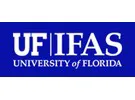A plant breeder and a food scientist, both with the University of Florida, will join a $12.8 million, multistate research grant to broaden the nation’s blueberry breeding capabilities.
For the project, Patricio Muñoz, a UF/IFAS assistant professor of horticultural sciences and Charlie Sims, a UF/IFAS professor of food science and human nutrition will provide feedback on the genetic characteristics that prove best for various blueberry cultivars. Scientists seek improved taste, aroma and yield, among other traits.
Muñoz will continue his experimental blueberry growth trials at the main UF campus in Gainesville, the UF/IFAS Plant Science Research and Education Unit in Citra, Florida and at a commercial farm near Waldo, Florida. Sims will conduct taste test panels from his lab on the UF Gainesville campus.
UF/IFAS blueberry breeding goes back to the 1940s. Among the recent blueberry cultivars developed by UF/IFAS are Arcadia™, Avanti™ and Endura™.
With about 5,000 acres, the Florida blueberry industry is worth an estimated $82 million, according to the most recent statistics from the Florida Department of Agriculture and Consumer Services. So it’s important that farmers grow the best berries possible.
“Blueberries have been recognized for their health benefits, which in part have driven a large increase in consumption,” said Muñoz, the UF/IFAS blueberry breeder. “But global competition is getting more intense, and it is detrimental to our producers.”
Sims will provide feedback about which blueberry varieties consumers like best and hopefully some characteristics associated with their preferences. “This will provide important information to the breeders and geneticists in developing blueberry varieties that consumers like better,” Sims said.
As UF/IFAS breeders have developed blueberry cultivars, they have focused on factors such as machine harvestability, fruit quality and yield that can help growers stay profitable. However, with more intense competition, scientists need to develop fruit with exceptional flavor characteristics to help producers, Muñoz said.
“In this project, we will focus on this goal by exploring the genes that control fruit flavor,” Muñoz said. “Fruit with exceptional flavor will improve fruit consumption satisfaction and hopefully, increase purchasing frequency. All these will be beneficial to all the stakeholders involved in blueberries, from the nurseries producing the plants, to the producers of fruits, supermarkets selling the fruit and consumers of blueberries."
In his program, Muñoz uses numerous methods to develop new blueberry varieties. In all methods, scientists are selecting for the best genetic traits to help ward off diseases, pests, heat and drought, among other stress factors.
Muñoz and Sims join researchers at North Carolina State University, who were awarded a four-year, $6.4 million U.S. Department of Agriculture grant, and those funds are getting matched – dollar for dollar -- from various sources to study genetics and its use in the breeding of cranberries and blueberries. In addition to N.C. State and UF/IFAS, scientists from Oregon State University, Rutgers University, Michigan State University, the University of Wisconsin, Washington State University, the University of Georgia, Mississippi State University and the USDA are among those participating in the project.
For more information: 
Brad Buck
UF/IFAS
Tel: +1 (813) 757-2224
Email: bradbuck@ufl.edu
https://ifas.ufl.edu
